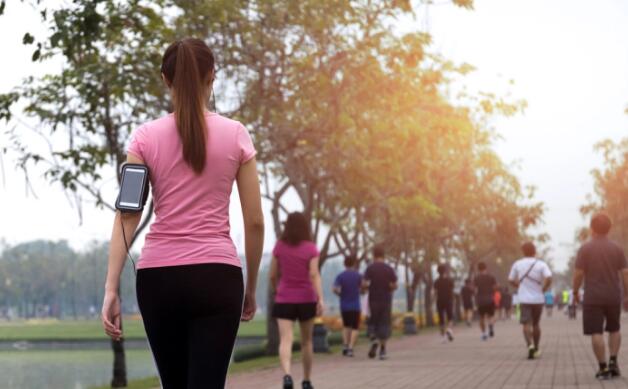Why Walking Shoes Are Still an Untapped Opportunity in the Athletic Market
In the ultracompetitive athletic industry, there are few categories that are underdeveloped. But experts say performance walking is one of them.
“It’s an untapped market,” said Matt Powell, senior sports industry advisor at The NPD Group, which recorded a 34% spike in walking shoe sales in 2021 versus 2020, on top of a 10% gain the previous year. “If someone came out and said, ‘This is the greatest walking shoe ever made and here’s why,’ I think we could get another shoe in the consumer’s closet.”
Like many outdoor fitness activities, walking participation boomed in the pandemic, as Americans took to sidewalks and trails as an escape from their homes and to stay active while gyms were closed.
According to the Sports & Fitness Industry Association, roughly 115.8 million Americans (age 6 and older) walked for fitness at least once in 2021. “By comparison, running and jogging hover around 50 million,” said SFIA president and CEO Tom Cove. “And the largest team sport is basketball, with 27.1 million.”
Now, as daily life returns to a more normal routine, the looming question is: Will walkers keep lacing up?
Cove predicts that participation growth will begin to dip, but not by much, for several contributing reasons. Foremost, he explained, walking is still easily accessible, affordable and can be done with friends or individually. “Also, one of the issues that people kind of sleep on is the digital connection,” Cove added. “The ability to listen to a podcast when you walk is massive to people, and the ability to track your steps for health or for a competition. Those trends in society are very walking friendly.”
That aligns with the findings from a recent study by Rockport and First Insight, which surveyed more than 1,700 adults about their walking habits as offices reopen. “We were really pleased to see that 60% of professionals still plan to take one to three walk breaks per week,” said Lisa Laich, chief marketing officer at The Rockport Group. “That number was higher than I would have expected.”
She noted another surprising finding, that 74% expressed no concern about stepping away from their desk to go for a walk. “I think that speaks to the changes we’re going to see in the work week,” said Laich. “The pandemic has allowed us to all embrace a degree of flexibility, and we really see that more pronounced among the Gen Z and millennial age groups.”

With such as rosy outlook for walking, why aren’t more footwear brands focused on this activity?
Powell points to competitive products. “A lot of people who are walking for fitness are wearing running shoes, because they’re much more readily available and they look a little bit more stylish,” he said. As a result, some of the major athletic players largely ignore the category, citing a lack of demand.
However, those that have established a strong stance in the market are seeing success. NPD found that the No. 1 walking shoe brand in the U.S. is Skechers, followed by Ryka, New Balance, Easy Spirit and Propét.
Skechers has invested strongly in the category. This year, it launched a new workout walking collection with campaigns starring Brooke Burke and NFL Hall of Famer Cris Carter. That helped contribute to the company’s 27% revenue gain in Q1, for a quarterly record of $1.82 billion.

For Rockport, the brand has responded to the recent boom by first reissuing its iconic men’s ProWalker 9000 shoe last year and then last month debuting the ProWalker Next sneaker for women. “This is a great example of listening to the consumer, seeing where the consumer is in their mindset and using Rockport’s expertise to develop a next-generation walking shoe,” said Laich.
In terms of demographics, walking continues to lean heavily toward women — participation was 56% female versus 44% male in 2020, according to SFIA — and to Powell, that spells opportunity. “Brands are all saying, ‘we’re going to get after the women’s business.’ Well, she’s buying walking shoes, so if you’re really thinking about getting after the women’s business, you probably ought to be thinking about walking,” he said.
But the perception that walking is just for seniors doesn’t hold up anymore. For 2020, SFIA found participation among adults was fairly evenly distributed. For instance, 25-to-34-year-olds made up 14.9% of total walkers, while the 65-and-older cohort represented 16.9%.
Cove noted those percentages could shift if younger athletes opt to return to gyms for more varied fitness experiences. “But overall, the numbers here are still massive,” he said.
